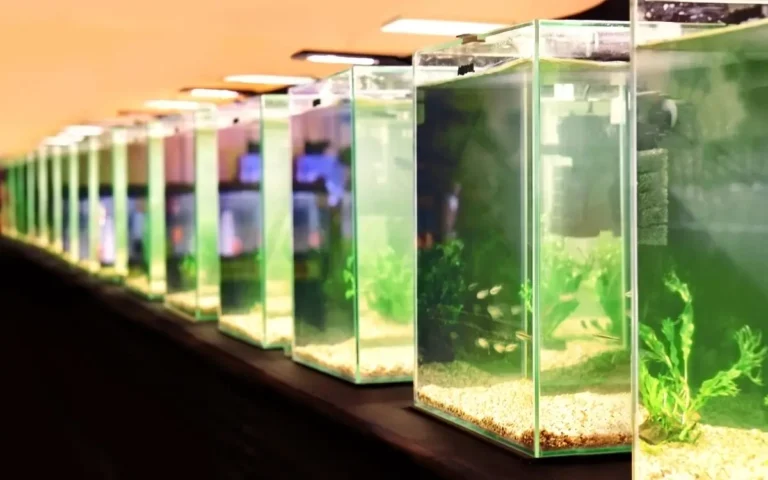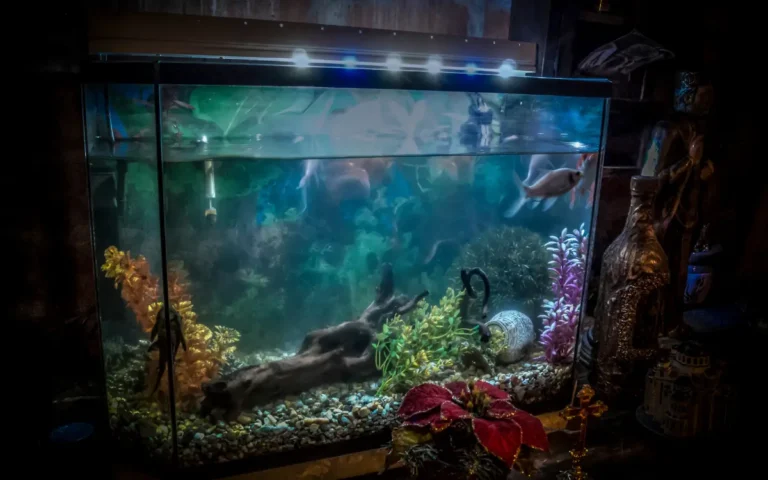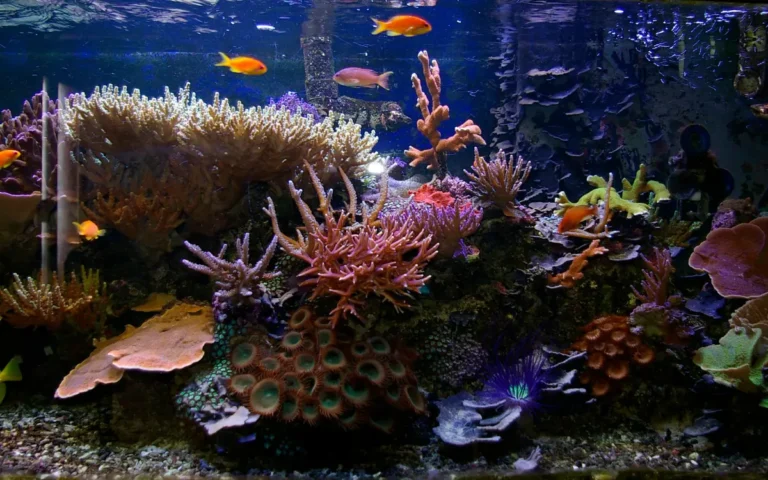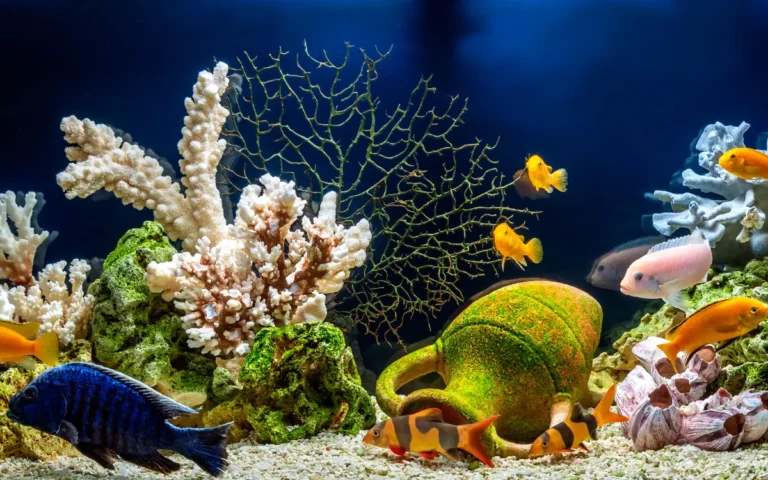Aquarium Sizes and Shapes: Choosing the Right Tank for Your Needs
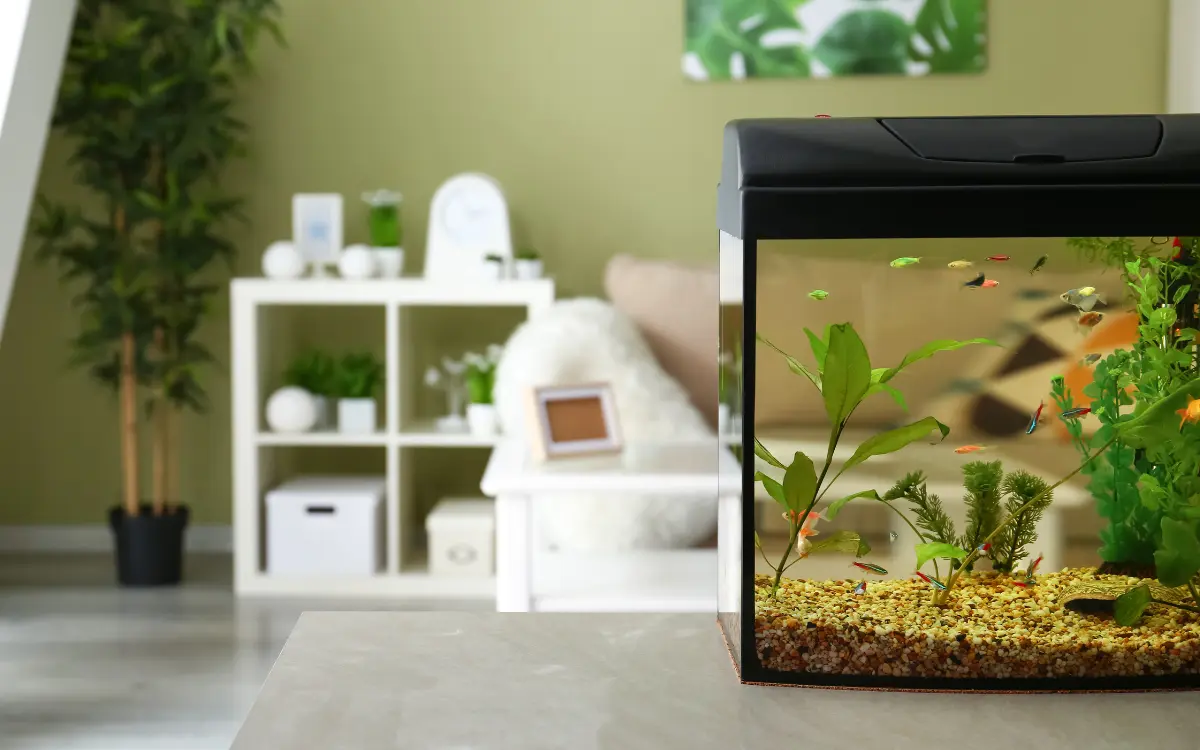
Choosing the right aquarium size and shape is essential for a healthy environment for your aquatic pets. The correct tank ensures your fish have enough space and allows for proper filtration and maintenance.
This article covers various aquarium sizes and shapes, factors to consider, types of materials, essential accessories, and maintenance tips. Whether you’re a beginner or an experienced aquarist, this guide will help you make an informed decision for a beautiful and healthy aquarium.
Aquarium Sizes, Dimensions, and Capacities
| Tank Size (Gallons) | Dimensions (inches) | Dimensions (cm) | Capacity (Liters) |
| 10 | 20 x 10 x 12 | 50.8 x 25.4 x 30.5 | 38 |
| 20 | 24 x 12 x 16 | 61 x 30.5 x 40.6 | 76 |
| 30 | 36 x 12 x 16 | 91.4 x 30.5 x 40.6 | 114 |
| 55 | 48 x 13 x 21 | 122 x 33 x 53.3 | 208 |
| 75 | 48 x 18 x 21 | 122 x 45.7 x 53.3 | 284 |
| 100 | 72 x 18 x 20 | 182.9 x 45.7 x 50.8 | 378 |
Which Fish Tank Size Should I Choose?
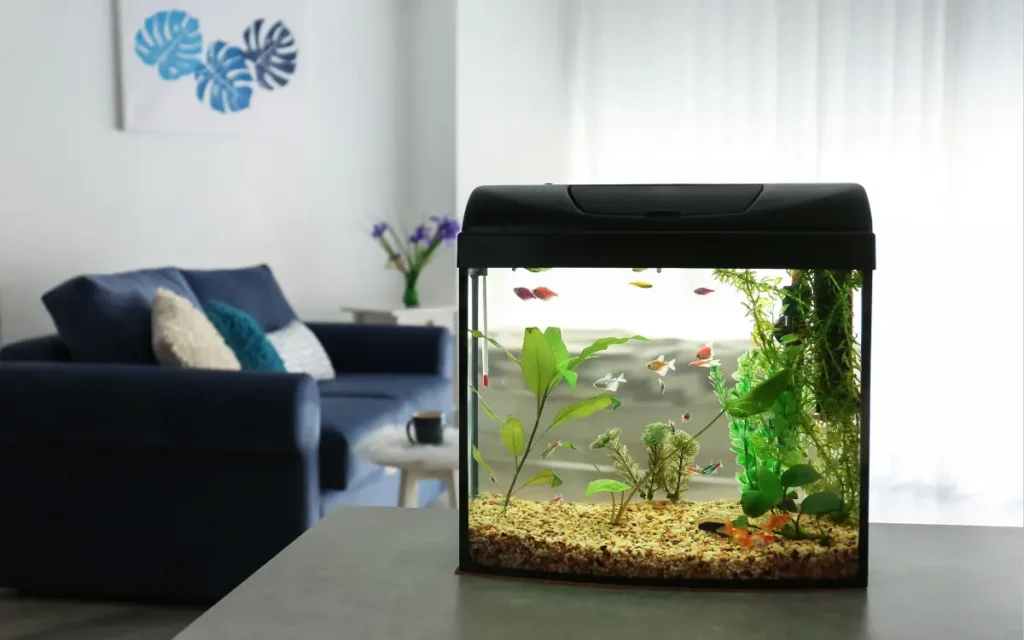
Factors to Consider When Choosing Tank Size
- Space: Measure available area.
- Fish Species: Different fish need different spaces.
- Budget: Larger tanks are costlier.
- Experience: Beginners might prefer smaller tanks.
Common Fish Tank Sizes and Their Capacities
- Small (5-20 gallons): Ideal for beginners.
- Medium (20-40 gallons): For small to medium fish.
- Large (50+ gallons): For larger fish and experienced aquarists.
How to Use an Aquarium Size Calculator
- Input tank dimensions (length, width, height).
- Choose the unit of measurement (inches, centimeters).
- Calculator provides volume in gallons or liters, helping determine the number of fish the tank can hold.
Fish Tank Sizes
Small Aquarium Sizes and Shapes
- Sizes: Typically range from 5 to 20 gallons.
- Shapes: Common shapes include rectangles, cubes, and bow fronts.
- Usage: Ideal for small fish and beginners.
Medium and Large Aquarium Sizes and Shapes
- Medium Sizes: Range from 20 to 40 gallons.
- Large Sizes: 50 gallons and above.
- Shapes: Includes rectangles, hexagons, and custom shapes.
- Usage: Suitable for more complex setups and larger fish species.
Fish Tank Sizes & Corresponding Weights
- 10-gallon tank: Approximately 111 lbs when filled.
- 20-gallon tank: Approximately 225 lbs when filled.
- 50-gallon tank: Approximately 600 lbs when filled.
- 75-gallon tank: Approximately 850 lbs when filled.
- Weight Consideration: Ensure your floor or stand can support the tank’s weight.
How Many Fish Can Each Fish Tank Size Hold?
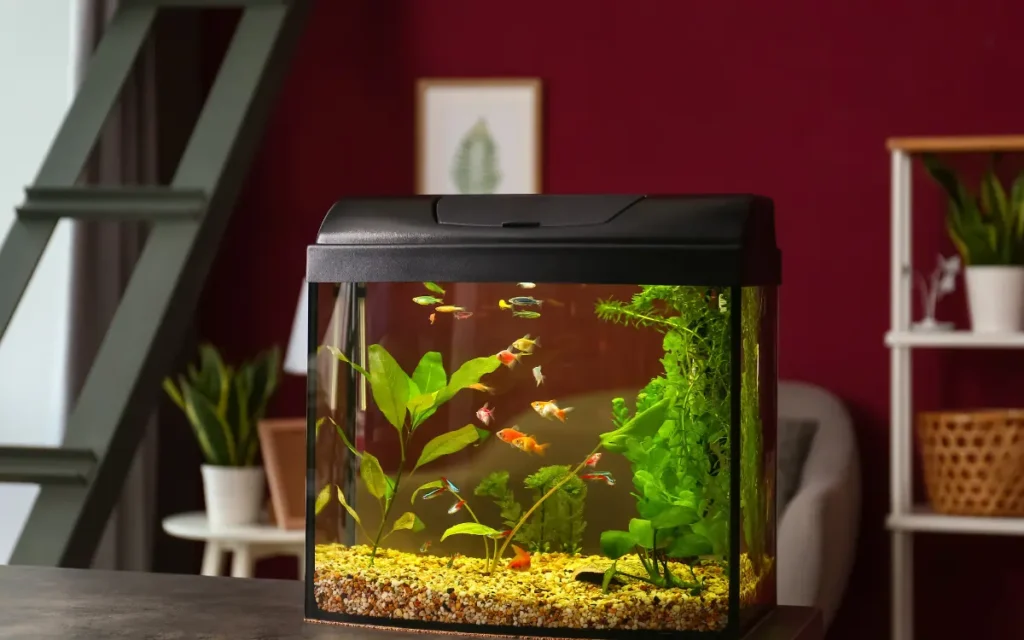
General Guidelines for Stocking Fish
- Rule of thumb: 1 inch of fish per gallon of water.
- Considerations: Fish size, species, and behavior (some fish need more space).
Example Stocking Levels for Different Tank Sizes
- 10-gallon tank: Up to 10 small fish (e.g., tetras, guppies).
- 20-gallon tank: Up to 20 small fish or 10 medium fish (e.g., mollies, dwarf gouramis).
- 50-gallon tank: Up to 50 small fish, 25 medium fish, or several larger fish (e.g., cichlids).
- 75-gallon tank: Suitable for large fish (e.g., angelfish, discus) or a community of various species.
Read also: Theme-Based Aquariums: Showcase, Breeding, And Quarantine Setups
Which Type of Fish Tank Should I Choose?
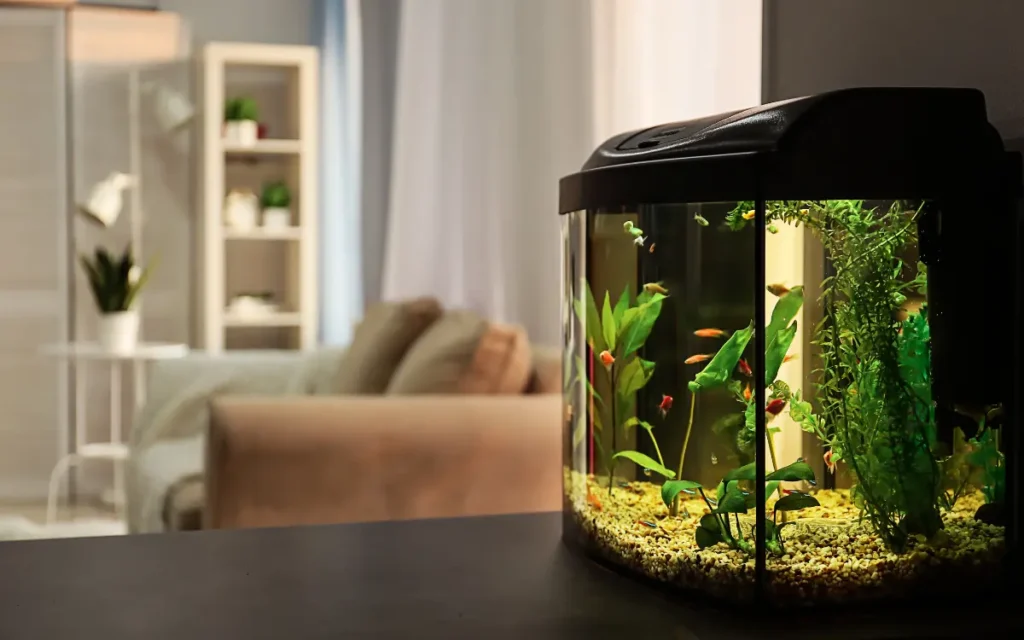
Material Options
- Glass Tanks: Scratch-resistant, affordable.
- Acrylic Tanks: Lightweight, various shapes, more expensive.
Saltwater vs Freshwater Tanks
- Freshwater Tanks: Easier to maintain, ideal for beginners, and less expensive.
- Saltwater Tanks: Require more maintenance, suitable for advanced aquarists, and offer a wider variety of colorful fish and corals.
Which Fish Tank Material Is Best?
Aquarium Materials: Glass vs. Acrylic
Glass Tanks
- Pros: Scratch-resistant, maintains clarity over time, more affordable.
- Cons: Heavier, less impact-resistant, limited shape options.
Acrylic Tanks
- Pros: Lightweight, impact-resistant, available in various shapes.
- Cons: More prone to scratching, can yellow over time, generally more expensive.
Aquarium Base Materials
Types of Aquarium Stands and Bases
- Wood Stands: Durable and can be aesthetically pleasing.
- Metal Stands: Strong and often more minimalist in design.
- Cabinet Stands: Offer storage space for supplies and equipment.
- Custom Stands: Tailored to specific tank sizes and room decor.
Importance of a Sturdy Base
- Support: Prevents tank from cracking or leaking due to uneven weight distribution.
- Stability: Ensures the tank remains level and safe, reducing the risk of accidents.
- Longevity: A solid base extends the lifespan of the aquarium and its components.
What Fish Tank Accessories Do I Need?
Essential Accessories for Aquariums
- Filter: Keeps water clean.
- Heater: Maintains stable temperature.
- Lighting: Supports plant growth.
- Substrate: Gravel or sand.
- Test Kit: Monitors water quality.
Optional Accessories for Enhanced Fishkeeping
- Air Pump and Airstones: Increase oxygen levels and water movement.
- Automatic Feeder: Ensures fish are fed regularly, even when you’re away.
- Aquarium Plants: Provide shelter for fish and improve water quality.
- Decorations: Enhance the visual appeal and provide hiding spots for fish.
- Protein Skimmer: Removes organic waste from saltwater tanks.
- UV Sterilizer: Helps control algae and pathogens.
Tips for Choosing and Maintaining Your Aquarium
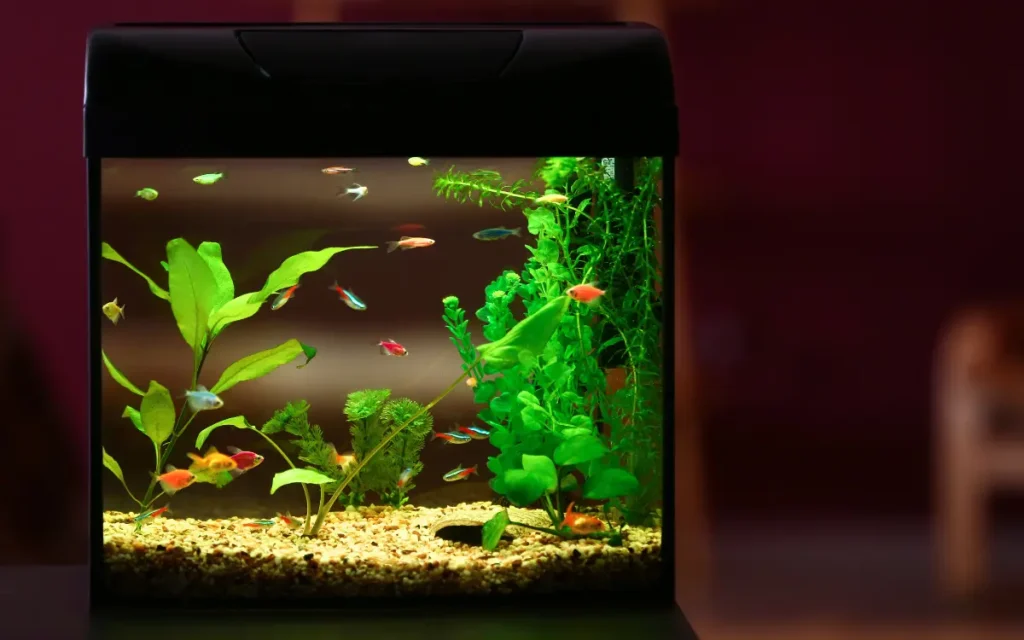
Expert Tips for Selecting the Right Tank
- Consider Tank Size: Ensure it fits your space and can accommodate the fish species you want.
- Choose the Right Shape: Rectangular tanks are generally easier to maintain and offer better surface area for oxygen exchange.
- Material Selection: Decide between glass and acrylic based on your needs for durability, weight, and clarity.
- Budget Wisely: Factor in not just the tank cost but also the accessories and ongoing maintenance expenses.
- Plan for Growth: Choose a tank size that allows your fish to grow and thrive, avoiding overcrowding.
Maintenance Tips for a Healthy Aquarium
- Regular Water Changes: Weekly 10-20% changes.
- Monitor Water Parameters: Regularly check pH, ammonia, nitrites, nitrates.
- Clean Tank: Remove algae, vacuum substrate.
- Check Equipment: Ensure filters, heaters, and lights are working.
Conclusion
Choose tank size and shape based on space, fish needs, budget, and maintenance capability for a healthy aquarium.
For more tips, check out our article on the different types of aquariums like freshwater Aquariums,Saltwater Aquariums,Brackish Water Aquariums and their benefits.
FAQs
What are the different sizes of aquariums?
Aquariums range from small (5-20 gallons) to large (50+ gallons).
What is the best shape for an aquarium?
Rectangular tanks are generally the best due to their surface area and ease of maintenance.
What size aquarium is best?
The best size depends on the fish species and available space; larger tanks are generally more stable.
Best size fish tank for beginners?
A 20-gallon tank is often recommended for beginners.
Aquarium sizes and dimensions in feet and inches?
Common sizes include 24″x12″x12″ (15 gallons) and 48″x13″x20″ (55 gallons).
Standard aquarium sizes in cm?
Examples: 60x30x30 cm (54 liters) and 120x30x50 cm (180 liters).
Fish tank sizes in litres?
Sizes range from 20 liters (small) to 200+ liters (large).
2 feet by 1 feet aquarium water capacity in litres?
Approximately 57 liters (15 gallons).
75 gallon tank dimensions?
Typically 48″x18″x21″ (122x46x53 cm).

